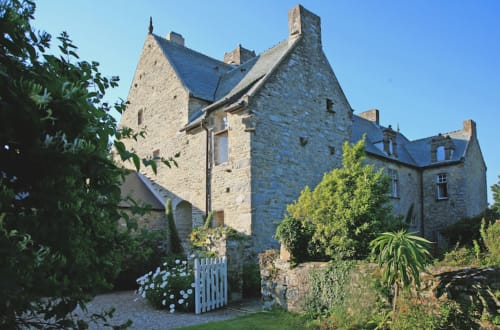The Manor today
The many architectural qualities of this characteristic manor house in the north of the Cotentin peninsula have earned it a place on the Supplementary Inventory of Historic Monuments . Although it belongs to two different eras - the 16th and 19th centuries - its perfectly symmetrical facade gives it great harmony. It is a soothing place . Once inside the walls, you can feel the peace and quiet that emanates from the stone, a gentleness that makes it a natural place to welcome people. As soon as you arrive, you will be immersed in the warm atmosphere of a family home , one of those where one likes to spend one's holidays, to rest and to recharge one's batteries. Furniture and objects collected over time, the exuberant harmony of the garden, and the little touches that punctuate your stay create a charming setting conducive to relaxation.
Take a break in the countryside, a few minutes from the centre of Cherbourg-en-Cotentin and and discover the wonderful landscapes of this little-known region!
La Glacerie owes its name to the presence
of a royal mirror glass factory (1667-1834)
on its territory.
It supplied mirrors to the GALERIE DES
GLACES of the CHÂTEAU DE VERSAILLES
In the beginning

At the beginning
From the 16th century to the middle of the 19th century, the manor of La Fieffe had the same owners as the castle of Tourlaville. Passed from the Fouquet de Réville to the Clérel de Tocqueville family, La Fieffe was sold on 1 February 1838 by Alexis de Tocqueville the illustrious political thinker, to two brothers from Cherbourg, Antoine and François Pierre, whose descendants sold the property to a certain Aimable Huet. His son, Abbot Joseph Huet, became vicar of Coutances Cathedral. It was he who enlarged the manor while respecting the original architecture of the building. Thus, three centuries apart, two abbots have marked the history of La Fieffe.
The property was inherited by Admiral Lemonnier Chief of the General Staff of the Navy during the Second World War. After having held the highest positions, this exceptional military man retired to La Fieffe, where he died in 1963.
(painting representing Marguerite de Ravalet - Mignard - 1658)





